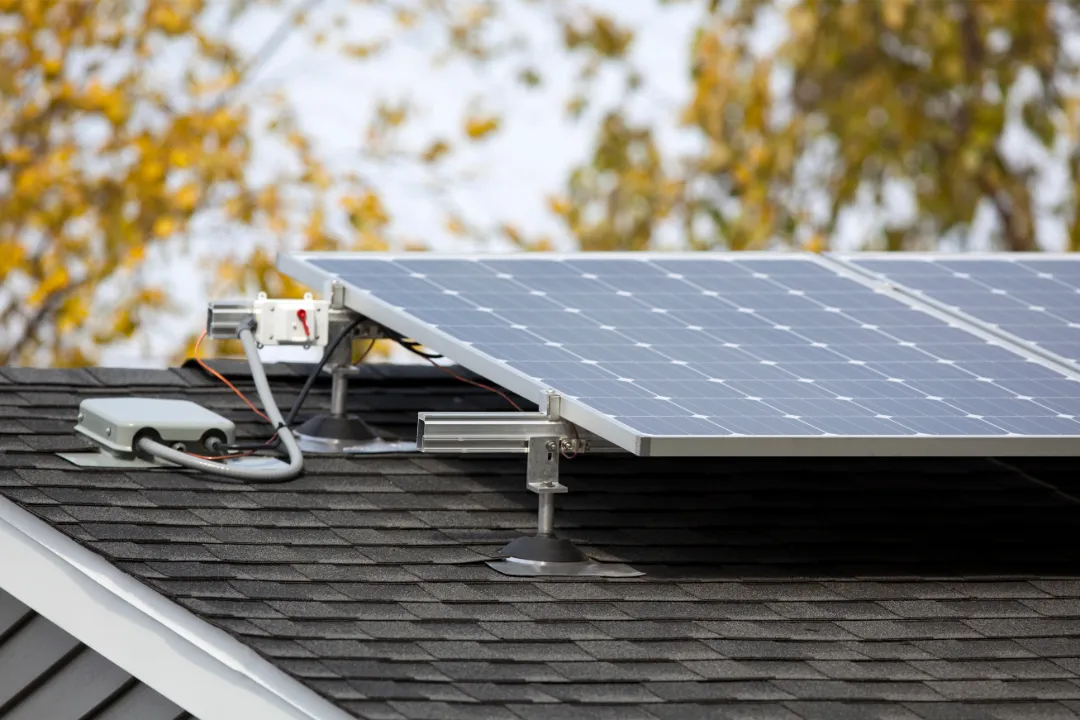PALM HARBOR SOLAR PROS BLOG
Insights from Our Solar Energy Journey

Renewable Energy for All: Making Solar Power Accessible to Every Household
Renewable energy has become an increasingly significant aspect of our modern society, as we strive towards a more sustainable future. With a growing emphasis on environmental consciousness, it is crucial that we address the issue of solar power accessibility for all households. The availability of solar energy has long been a challenge, but recent advancements and innovative approaches have paved the way for a more inclusive and accessible solar power landscape. In this discussion, we will explore various factors such as government incentives, community projects, financing options, and technological advancements that are key to making solar power accessible to every household. So, let's shed light on this important topic and uncover the potential for a brighter and greener future.
The Importance of Solar Power Accessibility
Solar power accessibility is crucial for a sustainable future, as it empowers every household to take control of their energy consumption and reduce their carbon footprint. One of the key factors in making solar power accessible to every household is its affordability. In the past, the high cost of solar power installations made it inaccessible to many people. However, advancements in technology and government incentives have significantly reduced the cost of solar panels and installation. This has made it more affordable for households to invest in solar power systems, allowing them to generate their own clean and renewable energy.
By making solar power affordable, we can encourage more households to switch to renewable energy sources, thereby reducing their reliance on fossil fuels and lowering carbon emissions. The burning of fossil fuels for electricity production is one of the leading contributors to greenhouse gas emissions, which is a major cause of climate change. By harnessing the power of the sun, households can significantly reduce their carbon emissions and contribute to a cleaner and healthier environment.
In addition to reducing carbon emissions, solar power accessibility also provides households with greater energy independence. By generating their own electricity, households are no longer solely reliant on the grid, which can be vulnerable to blackouts and price fluctuations. Solar power allows households to have a reliable and stable source of energy, reducing their dependence on fossil fuels and promoting energy security.
Government Incentives and Policies
To further support the affordability and accessibility of solar power, government incentives and policies play a crucial role in promoting renewable energy adoption among households. Government support is essential in driving the growth of solar power by providing financial assistance and creating a favorable regulatory framework.
One of the key government incentives is the provision of financial subsidies and tax credits for installing solar panels. These incentives help reduce the upfront costs for households, making solar power more affordable and attractive. Additionally, governments can offer low-interest loans or grants to support the installation of solar power systems, further encouraging adoption.
Moreover, governments can implement net metering policies, which allow households to sell excess solar power back to the grid, effectively reducing their electricity bills. This not only incentivizes households to install solar panels but also contributes to the overall renewable energy generation.
In terms of regulatory framework, governments can establish feed-in tariffs that require utility companies to purchase solar energy generated by households at a predetermined rate. This ensures a steady income stream for households and guarantees a return on their investment in solar power systems.
Furthermore, governments can simplify the permitting and approval processes for solar panel installations, reducing bureaucratic hurdles and making it easier for households to go solar.
Community Solar Projects
Community solar projects provide an opportunity for multiple households to collectively benefit from solar power without the need for individual installations. These projects not only promote community engagement but also have a positive environmental impact. By pooling resources and sharing the benefits of solar energy, community solar projects make renewable power accessible to a larger number of households.
One of the key advantages of community solar projects is the increased community engagement they foster. These projects bring people together, allowing them to work towards a common goal of transitioning to clean energy. Residents can participate in the decision-making process and have a say in how the project is implemented, fostering a sense of ownership and empowerment within the community.
Furthermore, community solar projects have a significant environmental impact. By harnessing the power of the sun, these projects reduce reliance on fossil fuels and decrease greenhouse gas emissions. They contribute to the overall sustainability of the community and help combat climate change. Additionally, community solar projects often prioritize the use of local resources and materials, further minimizing their environmental footprint.
Innovative Financing Options
With the goal of making solar power accessible to every household, we explore innovative financing options. One such option is crowdfunding campaigns, which have become increasingly popular in recent years. Crowdfunding allows individuals or groups to pool their resources and fund solar projects collectively. This method not only provides financial support but also creates a sense of community involvement and ownership. Through crowdfunding campaigns, even individuals with limited financial resources can contribute to the transition to renewable energy.
Another innovative financing option is microfinance opportunities. Microfinance institutions provide small loans to individuals or communities who may not have access to traditional banking services. These loans can be used to invest in solar installations, enabling households to generate their own clean energy. Microfinance opportunities are particularly beneficial for low-income households, as they provide a flexible and accessible way to finance solar power systems.
Technological Advancements in Solar Energy
Solar energy has seen significant technological advancements that have greatly improved its efficiency and affordability. One key area of progress is in grid integration, which allows solar power to be seamlessly integrated into existing electrical grids. This means that excess solar energy can be fed back into the grid, reducing the reliance on traditional sources of electricity. Grid integration also enables solar power to be used during times when there is little or no sunlight, ensuring a continuous and reliable energy supply.
Another important advancement is in solar panel efficiency. Over the years, there has been a steady increase in the efficiency of solar panels, meaning that they can convert a greater amount of sunlight into usable electricity. This has made solar power more cost-effective, as it requires fewer panels to generate the same amount of energy. Additionally, improved efficiency has made solar panels more versatile, allowing them to be used in a wider range of applications, such as on rooftops, in solar farms, and even on portable devices.
Conclusion
In conclusion, ensuring accessibility to solar power for every household is crucial for a sustainable future. Government incentives and policies, community solar projects, innovative financing options, and technological advancements are all key in achieving this goal. By making solar power more accessible, we can reduce our reliance on fossil fuels and contribute to a cleaner and greener planet. Let's work together to bring renewable energy to every home and build a brighter future for all.
Connect With Us
Locations We Serve:
© Copyright 2026 Palm Harbor Solar Pros. All Rights Reserved.
Terms & Conditions | Privacy Policy

